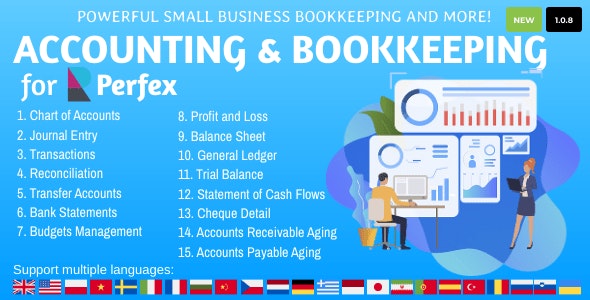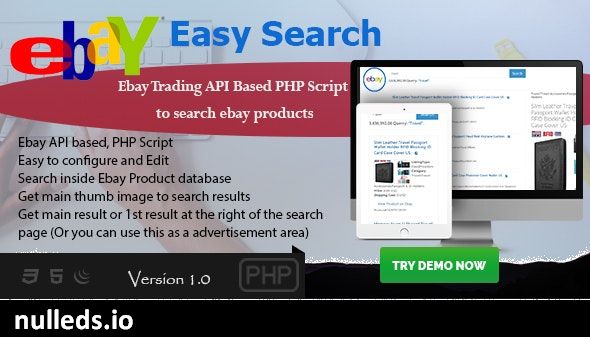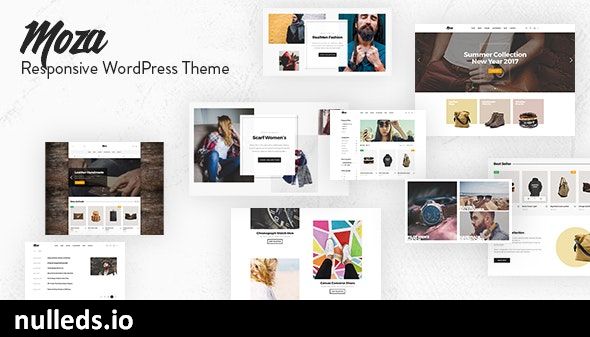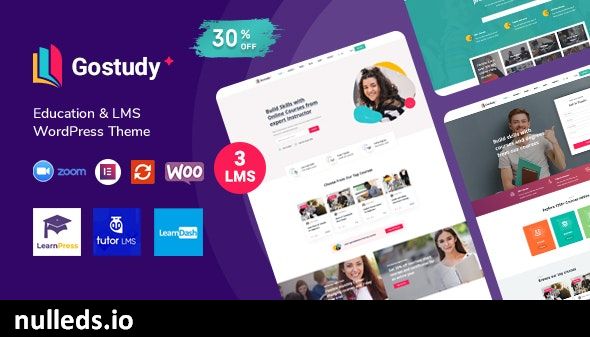Free Download Accounting and Bookkeeping for Perfex CRM v1.3.4
Free Download from here >>>
Note:
Brief description; introduction
Accounting
Benefits of Accounting and Bookkeeping Module
Using this module can help reduce the burden of manual data entry, prevent common human errors, help companies and accountants when tax time comes, and allow users to view in-depth reports on their company’s financial status.Perhaps the biggest advantage of this module is that it can save all the time.With this module, all their financial reports will be integrated into an online system, making it easier to track their records.The corporate accounting module provides the ability to automate many processes, which not only saves time, but also ensures the accuracy and efficiency of financial reports.
Module characteristics
- Dashboard: Income statement, income statement, expense statement, cash flow statement and bank account overview
- Transactions:
- Map bank statements to accounting
- Map invoice to accounting
- Map payment to accounting
- Map expenses to accounting
- Mapping purchases to accounting (needsModul Beschaffungsmanagement)
- Mapping inventory to accounting (needsInventory management module)
- Map payroll to accounting (need toМодуль расчета заработной платы кадровых ресурсов)
- Impostazioni di mappatura del progetto
- Impostazioni di mappatura delle categorie di spesa
- Tax mapping settings
- Bank rules: Automatic classification of transactions
- entrada de diario: Record transactions in the general ledger
- Transfer: Amount transfer between accounts
- Chart of accounts: Is a list of accounts and names related to your company.Generally, the chart of accounts will have four categories (asset account, liability account, income account, and expense account).
- Reconcile: Is the process of matching transactions entered into the module with your bank or credit card statement
- Budget management: Support the preparation of budgets to help you monitor, track and compare expected income and expenditure with actual income and expenditure.When you prepare a budget, you usually prepare it for a fiscal year, you can choose to provide the budget amount or use the historical amount
- Business overview report:
- Balance sheet comparison: Compared with last year, what you have (assets), what you owe (liabilities), and what you invest (equity).
- Balance sheet details: A detailed view of what you own (assets), owe (liabilities), and investments (equity).
- Balance sheet summary: A summary of what you have (assets), what you owe (liabilities), and what you invest (equity).
- Balance sheet: what do you own (assets), what do you owe (liabilities), what do you invest in (equity).
- Custom summary report: A report you build from scratch. There are more customization options.
- Profit and loss as a percentage of total income: your expenditure as a percentage of total income.
- Profit and loss comparison: Compared with last year, your income, expenses and net income (profit and loss).
- Profit and loss details: profit and loss details
- Year-to-date profit and loss comparison: Compared with the income, expenses and net income (profit and loss) so far this year.
- Profit and loss: your income, expenses, and net income (profit and loss). Also called the income statement.
- Cash flow statement: cash inflows and outflows from sales and expenses (operating activities), investment and financing.
- Statement of Changes in Equity: Statement of Changes in Equity.
- Bookkeeping report:
- Account list: The name, type and balance of each account in the account table.
- Balance sheet comparison: Compared with last year, what you have (assets), what you owe (liabilities), and what you invest (equity).
- Balance sheet: what do you own (assets), what do you owe (liabilities), what do you invest in (equity).
- General ledger: the beginning balance, transaction and total of each account in the chart of accounts.
- Journal: the debits and credits for each transaction, listed by date.
- Profit and loss comparison: Compared with last year, your income, expenses and net income (profit and loss).
- Profit and loss: your income, expenses, and net income (profit and loss). Also called the income statement.
- Account History: Account History
- Recent transactions: Transactions that you created or edited in the past 4 days.
- Cash flow statement: cash inflows and outflows from sales and expenses (operating activities), investment and financing.
- Transaction details by account: the transaction and total of each account in your chart of accounts.
- Transaction list by date: A list of all transactions, sorted by date.
- Trial Balance: This report summarizes the debit and credit balances of each account on the chart of accounts over a period of time.
- sale tax:
- Tax detailed report: This report lists the transactions contained in each box on the tax return.This report is based on accrual accounting, unless you change your tax reporting preference to a payment realization basis.
- Tax liability report: How much sales tax you have collected and the amount you owe tax authorities.
- Tax summary report: This report displays summary information for each box in the tax return.This report is based on accrual accounting, unless you change your tax reporting preference to a payment realization basis.
- Sales and customer reports:
- Deposit details: Your deposit, including date, customer or supplier, and amount.
- Customer income summary: your income minus each customer’s expenses (net income).
- Fees and suppliers:
- Check details: The check you issued, including date, payee and amount.
- Budgets:
- Budget overview: This report summarizes your budget account balance.
- Profit and loss budget and actual situation: This report shows how well you meet your budget. For each type of account, the report compares your budget amount with your actual amount.
- Profit and loss budget performance: This report compares the actual amount with the budget amount for the current month, the fiscal year to date, and the annual budget.
- Aging:
- Aging summary of accounts receivable: the unpaid balance of each customer, grouped by the number of days overdue.
- Aging details of accounts receivable: unpaid invoices, grouped by days overdue.
- Accounts Payable Aging Summary: The total amount of unpaid bills, grouped by days overdue.
- Accounts Payable Aging Detail: Your unpaid bills are grouped by the number of days overdue.
Demo
Perfex Accounting and Bookkeeping Demo
user:
Set-up
If you don’t know how to do this, the included documentation will help you upload and activate the modules in Perfex CRM.
Support
Our support team is here to help you. Feel free to submit support votes.
The support staff will get back to you as soon as possible and guide you to resolve any issues.
Changelog
Version 1.3.4 / 2024-08-15
Updated A/R, A/P, Reconciliation reports.
Updated Bill Management, Checks Management features.
Added Items section in Bill feature.
Added Pay Bill management feature.
Added Bank Feeds feature.
Accounting and Bookkeeping for Perfex CRM [Free Download]
Accounting and Bookkeeping for Perfex CRM [Nulled]
PHP Scripts » Add-ons






